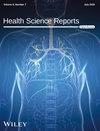Mass Media Exposure and Cervical Cancer Screening in Rural Sub-Saharan Africa: A Multi-Country Cross-Sectional Analysis
Abstract
Background and Aims
Cervical cancer is a pressing global public health challenge, with sub-Saharan Africa (SSA) experiencing disproportionately high incidence and mortality rates compared to other regions. Early detection through screening and timely treatment is essential for mitigating the burden of this disease. Evidence suggests that mass media exposure can play a pivotal role in increasing cervical cancer screening uptake. This study aimed to examine the prevalence of cervical cancer screening in SSA and to identify factors associated with screening uptake, with a specific focus on the influence of mass media among rural women.
Methods
The analysis utilized data from the Demographic and Health Surveys (DHS) conducted in 11 SSA countries, encompassing responses from 72,565 rural women of reproductive age (15–49 years). The primary outcome variable was cervical cancer screening status. Descriptive statistics, including frequencies and cross-tabulations, were employed to characterize the sample. Given the skewed distribution of the outcome variable, complementary log-log regression models were applied to estimate adjusted odds ratios (AORs) in both bivariate and multivariable analyses. Robustness of the statistical models and their fitness were rigorously assessed to ensure the validity of the findings.
Results
The overall prevalence of cervical cancer screening among women in the 11 countries was 8.47%. Women with exposure to mass media were significantly more likely to undergo screening. Specifically, women who watched television less than once a week (AOR = 1.22, 95% CI: 1.07–1.38) or at least once a week (AOR = 1.39, 95% CI: 1.26–1.53) had higher odds of being screened compared to those with no exposure to television. Similar positive associations were observed for radio and newspaper/magazine exposure. Women who listened to the radio at least once a week (AOR = 1.59, 95% CI: 1.45–1.74) and those who read newspapers/magazines at least once a week (AOR = 1.68, 95% CI: 1.48–1.90) demonstrated increased odds of undergoing screening. Additional predictors of screening included older age, higher education levels, greater wealth, higher parity, and fewer barriers to accessing healthcare, such as not needing permission or assistance to seek care.
Conclusion
This study highlights the critical role of mass media—television, radio, and newspapers/magazines—in promoting cervical cancer screening among rural women in SSA. Public health stakeholders and governments should prioritize leveraging these platforms to design and disseminate culturally tailored campaigns aimed at overcoming barriers to screening in rural communities. By optimizing the reach and effectiveness of mass media, particularly traditional channels prevalent in rural SSA, cervical cancer screening rates can be significantly improved, thereby reducing the disease burden in the region.


 求助内容:
求助内容: 应助结果提醒方式:
应助结果提醒方式:


